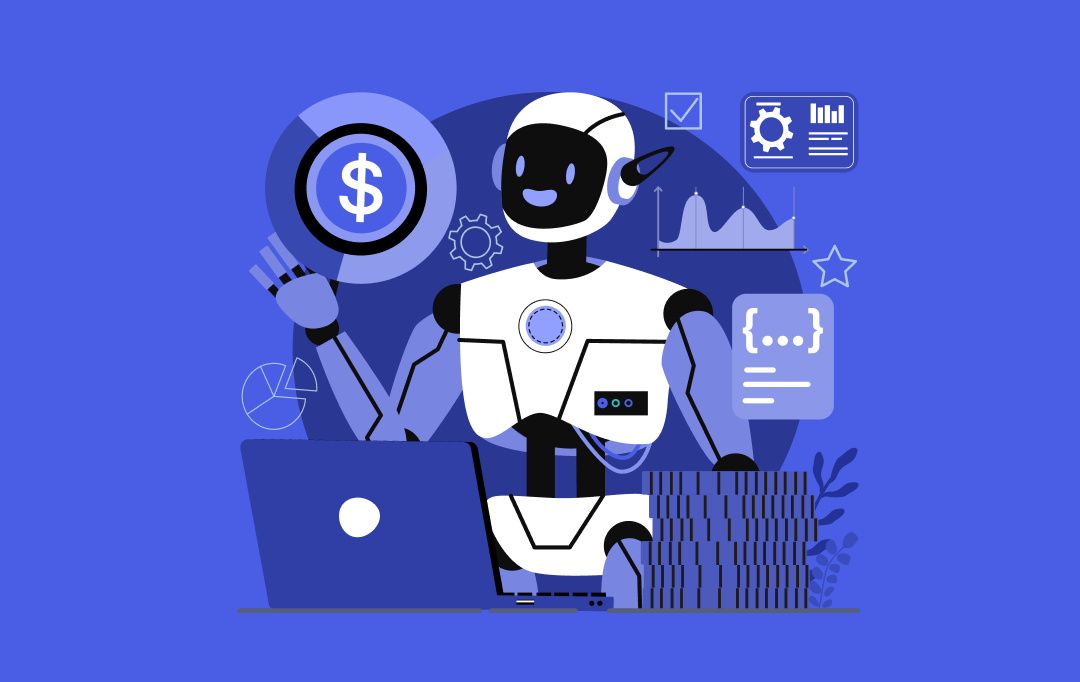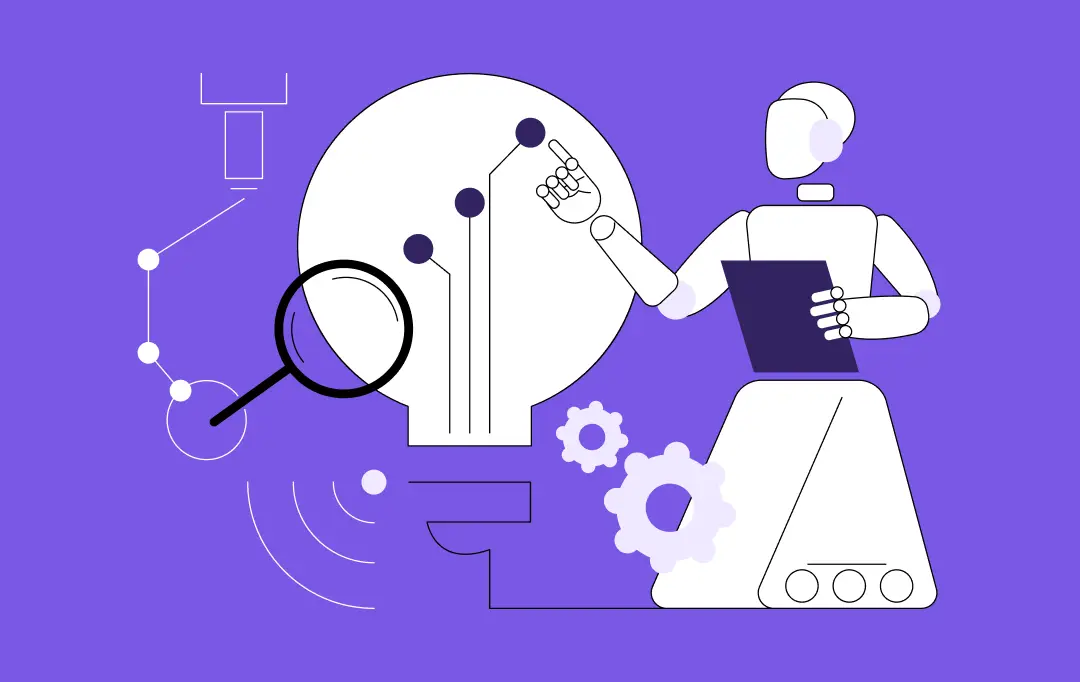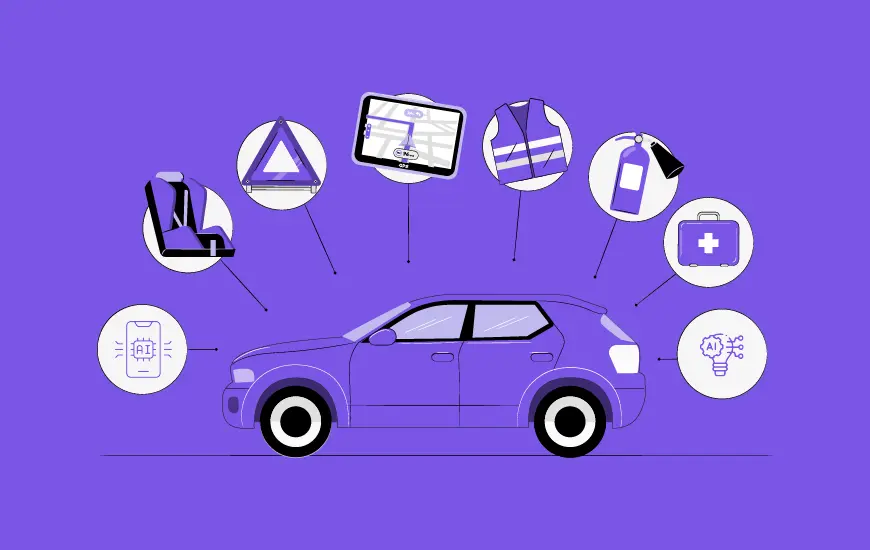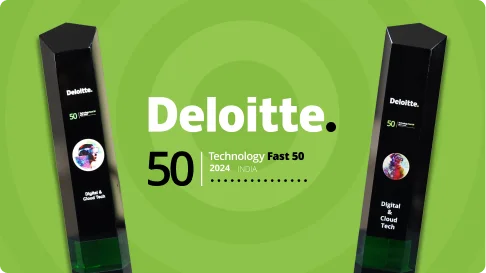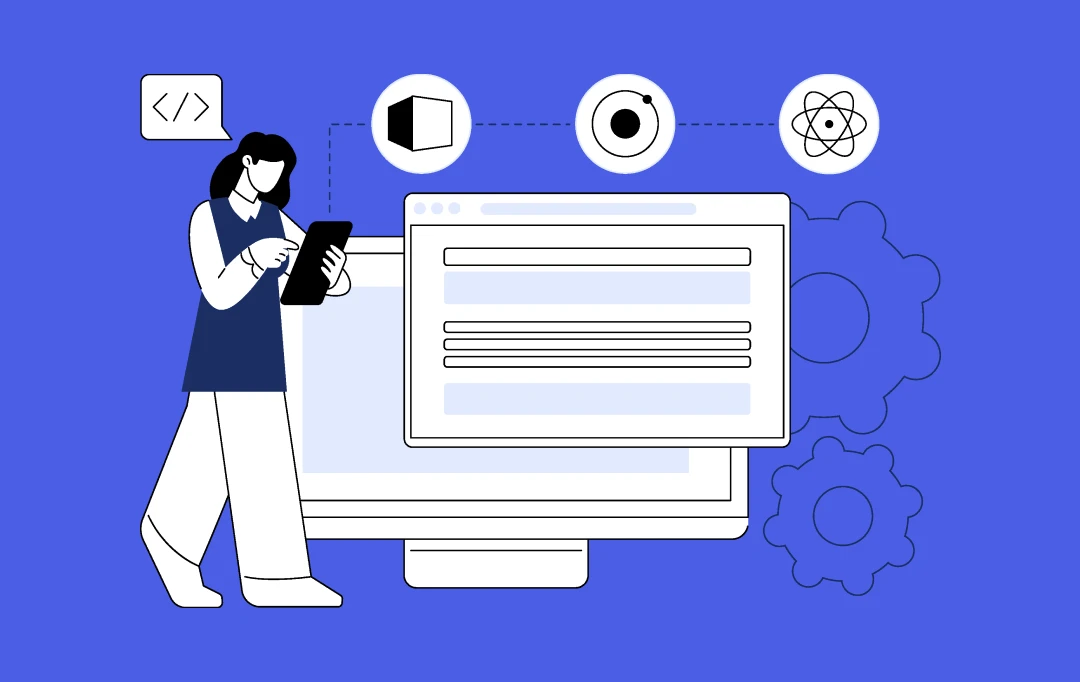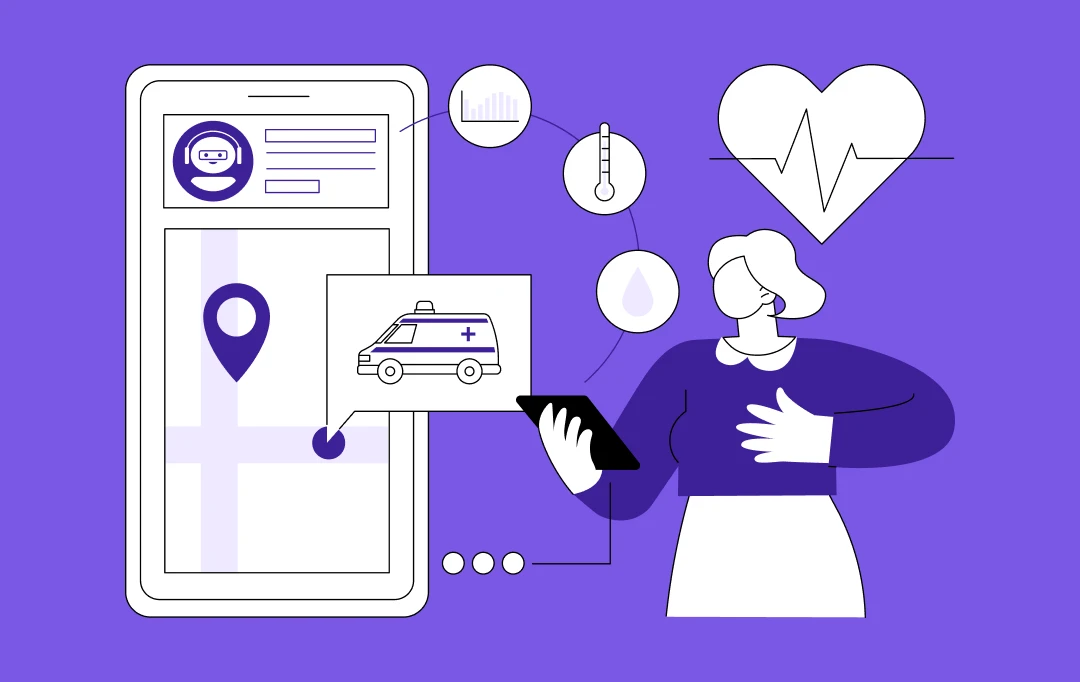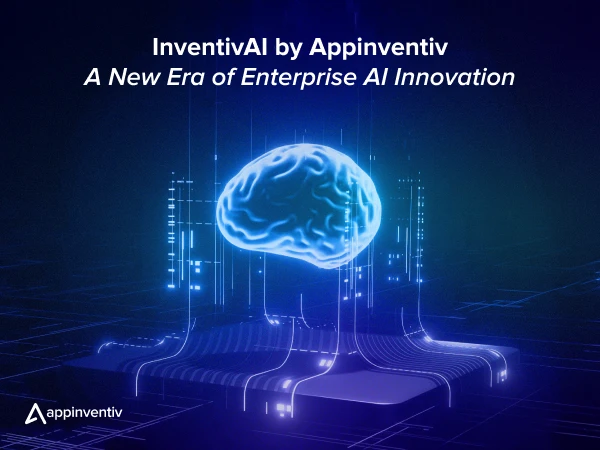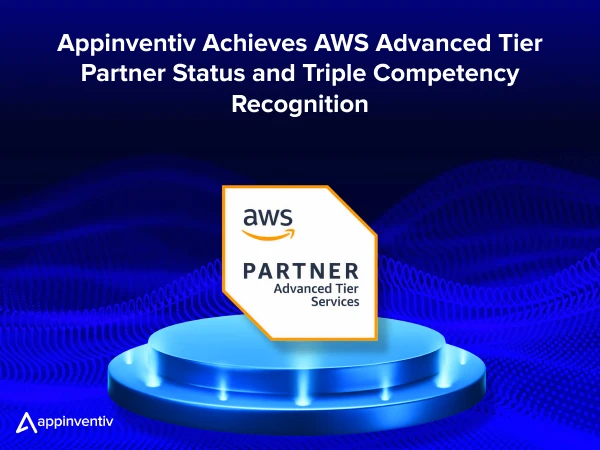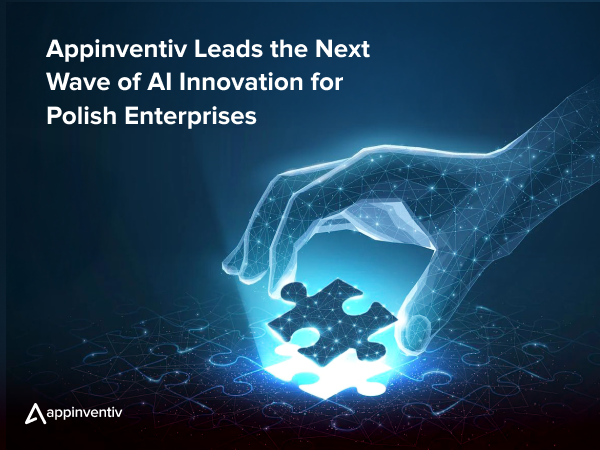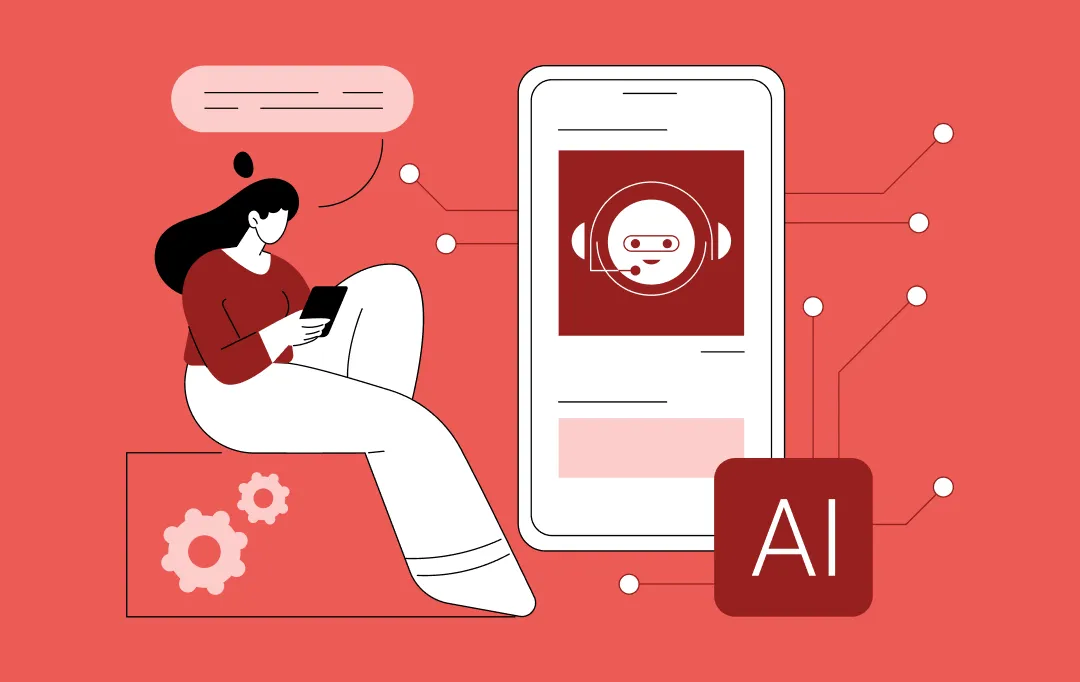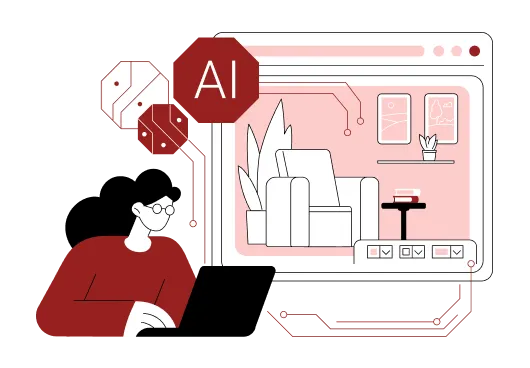- Market Momentum Drives Explosive Growth in Agentic AI Adoption
- Core Ways Agentic AI is Reshaping SaaS Applications
- Enhanced Decision-Making Speed
- Autonomous Workflow Orchestration
- Contextual Intelligence
- Revenue Enhancement
- Operational Resilience
- Competitive Differentiation
- Real-World Applications of Agentic AI in SaaS
- Zendesk AI Resolution Platform Implementation
- Healthcare Agent Orchestration
- Enterprise Sales and Proposal Automation
- The Smart Path to SaaS Growth: AI Agent Integration
- Multi-Agent Orchestration
- Dynamic Resource Allocation
- Collaborative Intelligence
- Financial Planning: What Agentic AI Implementation in SaaS Really Costs
- Overcoming Agentic AI Implementation Challenges in SaaS
- Challenge 1: Reliability and Consistency Concerns
- Challenge 2: Security and Data Governance
- Challenge 3: Integration Complexity
- Challenge 4: Change Management and Adoption
- Challenge 5: Trust and Transparency
- What's Next: Emerging Agentic AI Trends in SaaS
- Convergence with Traditional SaaS
- Shift to Outcome-Based Pricing
- Multi-Agent Ecosystems
- Edge Computing Integration
- Software as Intelligent Partners
- Industry-Specific Specialization
- Autonomous Business Process Management
- Predictive and Prescriptive Capabilities
- Making the Call: Your Agentic AI Implementation Decision
- Transform Your SaaS Operations with Appinventiv's Expert AI Agent Development
- FAQs
Key Takeaways
- Agentic AI transforms SaaS from passive applications into intelligent systems that think, act, and adapt independently, marking the biggest shift in business technology since cloud computing.
- Real companies like H&M and Walmart demonstrate measurable results: 30% engagement increases, 26% EPS growth, and 30% cost savings, with 62% of organizations expecting returns exceeding 100%.
- Coordinated AI agent teams working together across departments achieve enterprise-scale automation, with specialized agents handling everything from customer service to supply chain optimization autonomously.
- Winning organizations invest in hybrid approaches, change management, and data infrastructure; 94% prioritize process orchestration over pure technology deployment for sustainable competitive advantage.
Picture your software making decisions without you. Agentic AI welcomes you, where apps don’t just respond to commands but actually think and act on their own.
Software that works by itself isn’t some sci-fi thing anymore; it’s happening right now, and it’s transforming how SaaS apps run your business. These smart systems:
- Learn from patterns and keep getting better at making decisions
- Change workflows as things happen based on what’s going on in your business
- Take care of complex stuff without you having to watch over them constantly
- Figure out what you need before you even know you need it
The move from regular SaaS applications to smart agents is probably the biggest change in business tech since we all moved from on-site servers to the cloud. Regular SaaS tools just sit there waiting for you to tell them what to do. But agentic AI in SaaS platforms actually take action; they solve problems by themselves, work with other systems without issues, and give you real results instead of just fancy features.
This isn’t just making existing tech better. It’s completely rethinking how SaaS helps your business, basically changing how you and your apps work together.
Market Momentum Drives Explosive Growth in Agentic AI Adoption
The enterprise agentic AI market is experiencing unprecedented growth, driven by demand for truly autonomous software systems that can think, decide, and act independently. The global enterprise agentic AI market was valued at USD 2.58 billion in 2024 and is projected to reach USD 24.50 billion by 2030, growing at a CAGR of 46.2%.
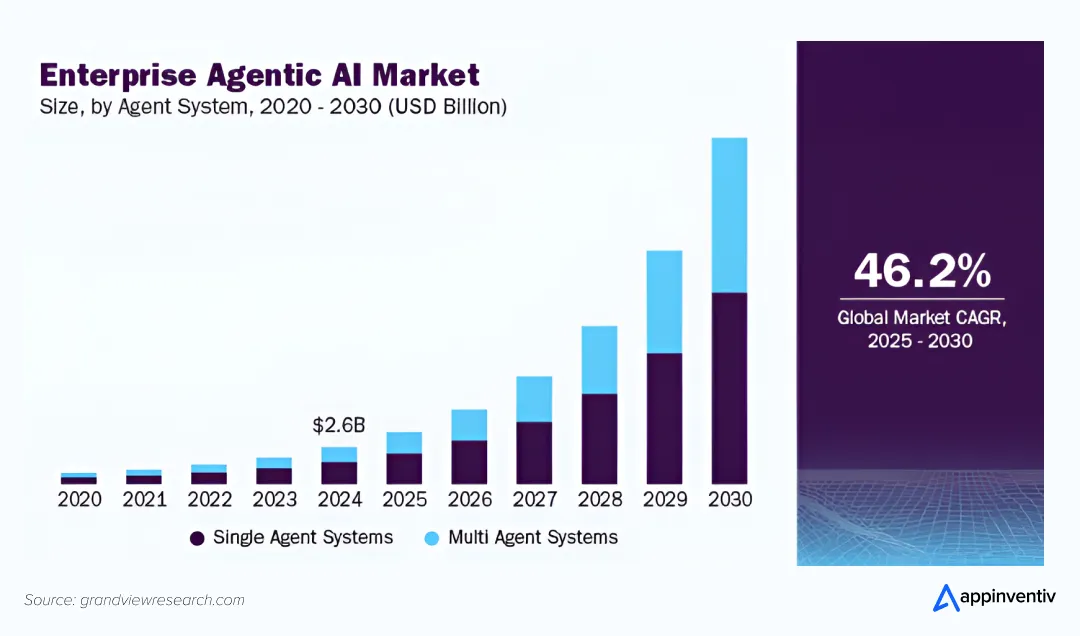
These exponential growth rates reflect a rapid shift toward enterprise-wide integration of AI agents that can reason, act, and adapt autonomously across complex digital workflows. Key market indicators include:
- 33% of enterprise software applications will embed agentic AI capabilities by 2028, compared to almost none in 2023
- Over USD 9.7 billion poured into agentic AI startups since 2023, with 45% of Fortune 500 companies actively piloting agentic systems
Early adopters are seeing 20% to 30% faster workflow cycles and significant reductions in back-office costs, with some customer service implementations reducing claim handling times by 40%. This market momentum creates a compelling environment for organizations to evaluate how agentic AI can transform their SaaS operations.
Core Ways Agentic AI is Reshaping SaaS Applications
The agentic AI impact on SaaS extends far beyond simple feature additions, fundamentally changing how software applications function and deliver value. Traditional SaaS platforms required users to navigate interfaces, input data manually, and interpret results. Modern intelligent systems flip this model entirely.
Do Read: Legacy Application Modernization Strategy
Enhanced Decision-Making Speed
Where traditional SaaS required multiple steps and human interpretation, agentic systems process data and execute decisions in real-time. The agentic AI impact on SaaS becomes evident when examining how SaaS platforms now use intelligent agents for:
- Automated user provisioning and access management across different subscription tiers
- Real-time feature usage analysis and smart recommendation engines within the platform
- Continuous monitoring of application performance and automatic scaling decisions
- Cross-referencing data from user analytics, billing systems, support tickets, and usage metrics
Related: AI Agents in Fraud Detection
Autonomous Workflow Orchestration
The true power of AI’s potential to automate software-as-a-service extends beyond individual tasks to entire business processes. Modern AI agents demonstrate remarkable capabilities:
- Schedule meetings in Google Calendar automatically
- Update tasks in project management tools without prompts
- Send messages through communication platforms based on context
- Coordinate multi-step workflows across different software platforms
This orchestration capability represents a fundamental shift from reactive software to proactive business partners that anticipate needs and execute solutions.
Related Read: Practical Applications of AI as a Service for Your Business
Contextual Intelligence
Unlike traditional automation that follows rigid rules, Agentic AI SaaS applications adapt based on context and changing circumstances. For example, while a generic customer service platform might respond with predefined answers, an agentic AI system supporting a healthcare provider understands medical terminology, complies with healthcare regulations, and adapts to evolving patient concerns in real-time.
Revenue Enhancement
Agentic AI ROI for SaaS extends beyond cost savings to revenue generation. Companies report that AI agents create value through:
- Increased sales volumes by suggesting better product alternatives
- Reduced customer churn through proactive intervention
- Faster time-to-market for new products and services
- Enhanced customer experiences leading to higher retention rates
Operational Resilience
AI’s potential to automate software-as-a-service creates more resilient operations. When unexpected events occur – like an employee calling in sick or a supplier experiencing delays – agentic systems automatically adjust schedules, find alternative resources, and maintain operational continuity without requiring manual intervention.
Competitive Differentiation
Organizations gain competitive advantages through faster decision-making, more personalized customer experiences, and the ability to operate efficiently at scale when they enhance SaaS productivity with agentic AI implementations. These benefits compound over time, creating sustainable competitive moats that become increasingly difficult for competitors to match.
Are you starting to see why industry analysts predict that organizations not adopting agentic AI may struggle to compete with those that do? The window for competitive advantage is narrowing, making it crucial to engage with skilled development teams who can architect and implement robust agentic AI solutions tailored to your specific business needs.
Real-World Applications of Agentic AI in SaaS
Organizations across industries are implementing intelligent automation with measurable results that demonstrate the technology’s transformative potential.
Zendesk AI Resolution Platform Implementation
Zendesk deployed autonomous AI agents within its customer service SaaS platform to resolve customer inquiries from start to finish without routing every question to human agents. The agentic AI impact on SaaS becomes evident through the platform’s comprehensive integration approach:
- AI Agents, Knowledge Graph, Actions and Integrations work together to execute tasks like refunding orders and updating customer records directly within the SaaS environment
- Native integration with Slack, Jira, Salesforce, Microsoft 365, and AWS telephony minimizes deployment friction
- Advanced data privacy controls include real-time PII redaction and customizable retention policies for regulated industries
Must Read: Recommendation System in Machine Learning
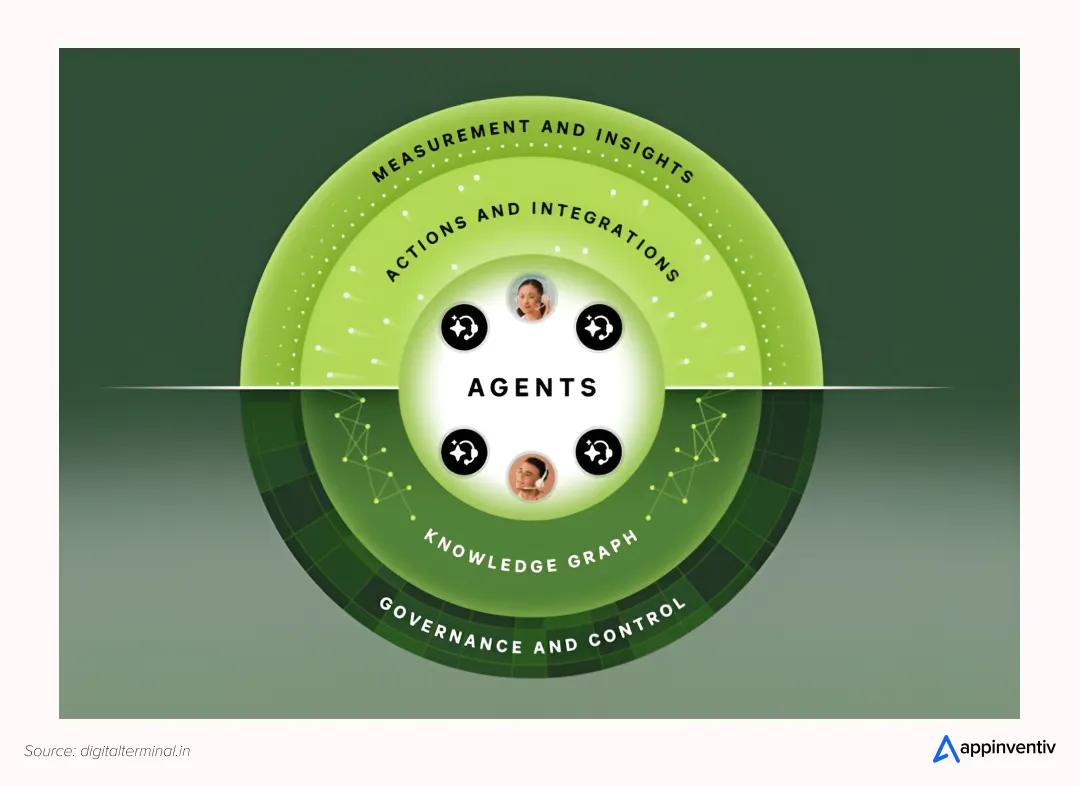
Healthcare Agent Orchestration
Stanford Health Care is using healthcare agent orchestrators to build and test AI agents that can help alleviate the administrative burden and speed up the workflow for tumor board preparation. This agentic AI SaaS application consults disparate data sources and collaborates on tasks that might otherwise take hours:
- Building chronological patient timelines
- Synthesizing current medical literature
- Sourcing relevant clinical trials
- Generating comprehensive reports for specialists
Stanford Medicine’s deployment of Nuance Dragon Ambient eXperience Copilot (DAX Copilot) showed that 96% of physicians stated it was easy to use, and 78% reported that it expedited clinical notetaking.

Enterprise Sales and Proposal Automation
HubSpot developed and integrated agentic AI directly into their SaaS platform, embedding over 80 AI features across their customer relationship management system to transform how businesses operate their go-to-market strategies. This agentic AI in SaaS example demonstrates measurable platform transformation through comprehensive integration across all business functions.
HubSpot’s integration of agentic AI agents includes specialized Content Agents, Social Media Agents, Prospecting Agents, and Customer Agents that handle end-to-end workflows from start to finish. This transformation demonstrates how SaaS companies can evolve from passive software tools into intelligent platforms that actively drive business outcomes and revenue growth.
These AI agents in business software showcase the tangible ROI organizations achieve through intelligent automation.
Do you see how these applications move beyond simple task automation to intelligent business orchestration? The shift represents a fundamental change in the relationship between software and business outcomes. Organizations looking to implement similar transformations should consider partnering with experienced AI development teams who understand both the technical complexities and business requirements of agentic systems.
The Smart Path to SaaS Growth: AI Agent Integration
Scaling SaaS with AI agents presents both opportunities and complexities that traditional scaling models never faced. Unlike conventional SaaS that scales by adding more users to the same interface, agentic systems scale by increasing the sophistication and autonomy of their decision-making capabilities.
Related Read: A Comprehensive Guide on Getting Your SaaS Business on Mobile App
Multi-Agent Orchestration
Scaling SaaS with AI agents requires sophisticated orchestration where multiple specialized agents work together in coordinated workflows rather than operating in isolation. This approach transforms how SaaS platforms handle complex business processes by enabling intelligent collaboration between different autonomous systems.
The benefits of multi-agent orchestration include:
- Distributed intelligence across different business functions
- Reduced single points of failure
- Specialized expertise for complex tasks
- Seamless handoffs between different agent capabilities
Walmart’s agentic AI framework demonstrates how multi-agent systems can work together, with Sparky (customer assistant) collaborating with associate agents to ensure in-store availability while pricing agents automatically adjust costs based on demand patterns. Industrial companies have achieved 90% touchless processing across industrial workflows, realizing significant annual savings through coordinated agent systems.
Dynamic Resource Allocation
Traditional SaaS platforms scale by provisioning more server capacity. AI agents in business software scale by becoming more intelligent and handling increasingly complex scenarios. This fundamental difference means that SaaS productivity with Agentic AI grows not just through volume but through enhanced capability and decision-making sophistication.
Collaborative Intelligence
Scaling SaaS with AI agents increasingly requires cross-platform collaboration where agents from different vendor ecosystems can work together seamlessly. Organizations need agents from different SaaS providers to share data and coordinate actions to achieve business objectives that span multiple systems and workflows.
Financial Planning: What Agentic AI Implementation in SaaS Really Costs
The integration cost of agentic AI in SaaS represents a significant consideration for organizations planning their digital transformation through AI. However, the investment profile differs substantially from traditional software implementations.
Upfront Investment Requirements
Recent surveys reveal substantial initial commitments:
- 42% of enterprises planning to build over 100 AI agent prototypes
- 68% budgeting $500,000 or more annually on AI agent initiatives
- Investment in data infrastructure and integration platforms
- Specialized expertise acquisition and training
Unlike traditional SaaS implementations that require primarily configuration costs, agentic AI demands investments across multiple areas simultaneously.
Infrastructure Complexity
Organizations must address substantial infrastructure requirements:
- 42% of enterprises needing access to eight or more data sources to deploy AI agents successfully
- More than 86% of enterprises require upgrades to their existing tech stack
- Integration with legacy systems and databases
- Security and compliance infrastructure enhancements
Ongoing Operational Costs
When calculating agentic AI ROI for SaaS platforms, organizations must account for continuous learning and adaptation costs:
- Model training and refinement expenses
- Data quality management and governance
- Monitoring and performance optimization
- Regular security updates and compliance audits
Unlike static software that remains unchanged until updates, agentic systems require ongoing investment to maintain effectiveness and reliability.
Return on Investment Timeline
While initial costs can be substantial, organizations typically see returns within 12-18 months through:
- Reduced labor costs and operational expenses
- Improved efficiency and faster decision-making
- Enhanced customer satisfaction and retention
- New revenue opportunities through improved capabilities
The key is focusing on high-impact use cases where autonomous decision-making delivers clear business value from the outset. Working with experienced AI development specialists can help identify these opportunities and create a roadmap that maximizes ROI while minimizing implementation risks.
Must Read: How Much Does It Cost to Build an AI Agent?
Overcoming Agentic AI Implementation Challenges in SaaS
Challenges for an agentic AI system for SaaS products span technical, organizational, and strategic dimensions. Here are the key challenges with proven solutions:
Challenge 1: Reliability and Consistency Concerns
- The Problem: Unpredictable nature of autonomous decision-making creates business risk
- The Solution: Implement robust testing frameworks, gradual deployment strategies, and human oversight mechanisms for critical decisions. By 2028, Gartner predicts that at least 15% of day-to-day work decisions will be made autonomously by agentic AI, up from 0% in 2024, making systematic reliability measures essential.
Challenge 2: Security and Data Governance
- The Problem: Security concerns emerging as the top challenge across both leadership (53%) and practitioners (62%)
- The Solution: Implement AI-specific security protocols, establish comprehensive plans to build an enterprise data strategy, and create detailed audit trails for all agent decisions and actions.
Challenge 3: Integration Complexity
- The Problem: Connecting agentic systems to existing infrastructure requires sophisticated platforms
- The Solution: Adopt hybrid approaches combining multiple strategies. 90% of enterprises view integration with organizational systems as “essential,” they are currently favoring hybrid approaches — a mix of build and buy (41%), single-purpose SaaS app agents (28%), or custom development (24%).
Challenge 4: Change Management and Adoption
- The Problem: Organizational resistance to autonomous systems threatens successful implementation
- The Solution: Deploy comprehensive training programs, communicate the role of AI agents as collaborators rather than replacements, and implement gradual transition strategies that build confidence in the technology.
Challenge 5: Trust and Transparency
- The Problem: Lack of visibility into AI decision-making processes creates user hesitation
- The Solution: Implement explainable AI to experience its benefits as it creates transparency in agent decision-making processes, and establish clear escalation paths when human intervention becomes necessary.
Must Read: AI TRiSM – The Framework to Managing Risk, Building Trust, and Securing AI Systems
What’s Next: Emerging Agentic AI Trends in SaaS
The key trends of agentic AI in Saas point toward a future where intelligent software becomes an integral part of business operations rather than a separate tool category.
Do Read: AI Agent Driven UIs (Replacing App Menus and Buttons)
Convergence with Traditional SaaS
Rather than replacing existing SaaS platforms, agentic AI increasingly integrates with them seamlessly:
- 56% of companies reported launching or testing AI features in their products within the past year
- 41% are monetising AI features, up 9% from 2023
- Integration approaches that enhance rather than replace existing workflows
- Gradual evolution from reactive to proactive software capabilities
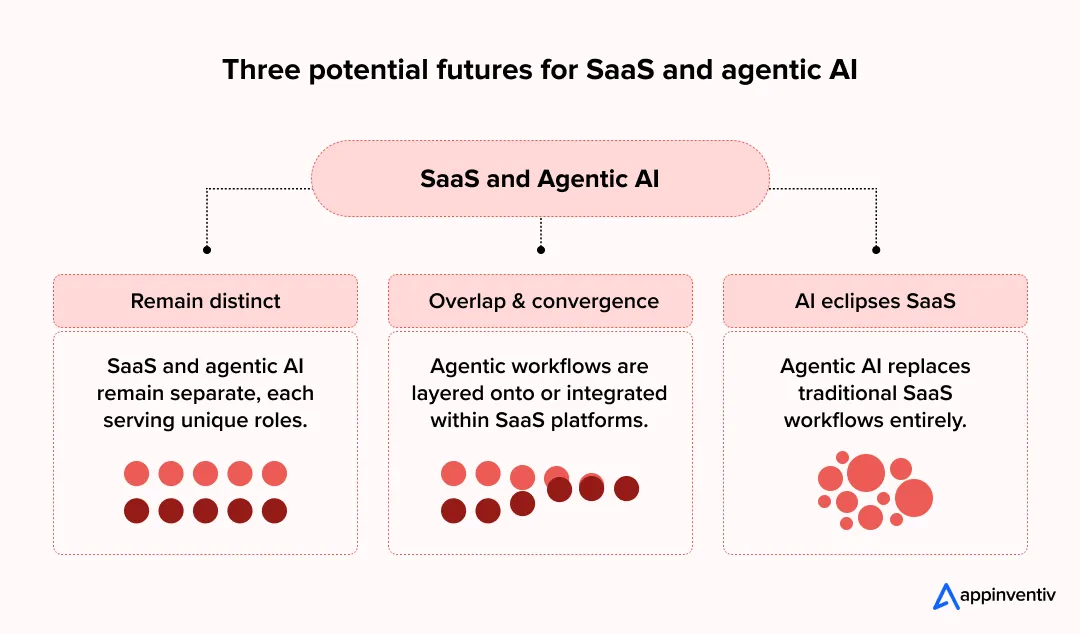
Shift to Outcome-Based Pricing
Traditional per-seat pricing models struggle to capture the value of autonomous agents. Organizations increasingly adopt outcome-based pricing:
- Customers pay for results achieved rather than software access
- Pricing tied to tasks completed, tickets resolved, or AI outputs generated
- Alignment of vendor and customer interests around measurable business outcomes
- Flexible pricing models that scale with actual value delivered
Multi-Agent Ecosystems
The evolution toward collaborative agent networks represents a significant trend:
- Multiple specialized agents coordinating to achieve complex business objectives
- Cross-departmental agent collaboration spanning different systems
- Agent-to-agent communication protocols enabling seamless workflows
- Emergence of agent marketplaces and specialized agent services
Edge Computing Integration
Advanced implementations combine intelligent agents with edge computing to enable:
- Real-time decision-making in field operations
- Reduced latency for time-sensitive applications
- Operation in remote locations with limited connectivity
- Enhanced data privacy through local processing
Software as Intelligent Partners
The future of SaaS in the agentic era envisions software applications that function as intelligent business partners rather than passive tools:
- Systems that anticipate needs before they’re expressed
- Proactive problem-solving without human intervention
- Continuous optimization of business processes
- Adaptive responses to changing business conditions
Industry-Specific Specialization
Future agentic systems will develop deep domain expertise in specific industries:
- Understanding of regulatory requirements and compliance needs
- Knowledge of industry best practices and standards
- Specialized workflows tailored to sector-specific challenges
- Integration with industry-standard tools and platforms
Autonomous Business Process Management
Complete business process automation where AI agents manage entire workflows:
- End-to-end process orchestration from initiation to completion
- Coordination with other agents, external systems, and human stakeholders
- Dynamic process optimization based on real-time conditions
- Self-healing systems that adapt to disruptions automatically
Predictive and Prescriptive Capabilities
Advanced agentic systems will evolve beyond reactive responses:
- Prediction of future scenarios based on current data patterns
- Prescription of optimal actions for anticipated situations
- Prevention of problems before they occur
- Strategic recommendations for long-term business planning
This evolution from reactive to predictive to prescriptive represents the maturation of AI from tool to strategic business asset.
What does this transformation mean for your organization’s software strategy? The convergence of traditional SaaS with agentic AI capabilities suggests that the most successful platforms will be those that seamlessly blend human oversight with autonomous execution. Organizations that proactively invest in custom SaaS development with integrated AI agents will position themselves as market leaders in the coming digital transformation wave.
Do Read: Custom Development or White Label Solutions: Which is Right for Your Business?
Making the Call: Your Agentic AI Implementation Decision
Organizations considering agentic AI implementation should focus on use cases where autonomous decision-making delivers clear business value. The most successful implementations start with well-defined processes that benefit from speed, consistency, and 24/7 availability.
The transformation requires investment in:
- Data infrastructure and integration capabilities
- Organizational change management and training
- Security frameworks and governance structures
- Performance monitoring and optimization systems
However, the competitive advantages gained through faster decision-making, reduced operational costs, and enhanced customer experiences often justify the investment within 12-18 months.
Success depends on choosing the right development partner who understands both the technical complexities of AI agent implementation and the business context where these systems deliver maximum value. Look for providers who offer comprehensive AI agent development services that include not just technical implementation but also change management, training, and ongoing optimization.
Additionally, consider teams with proven experience in SaaS development who can seamlessly integrate agentic capabilities into existing platforms or build new intelligent solutions from the ground up.
Must Read: How to Hire an AI Agent Development Company
The future belongs to organizations that view software not as a collection of tools but as an intelligent workforce of digital agents working alongside human teams. The question isn’t whether agentic AI will transform SaaS – it’s whether your organization will lead or follow this transformation. Smart businesses are already partnering with specialized development teams to build competitive advantages through custom AI agent solutions and next-generation SaaS platforms.
Transform Your SaaS Operations with Appinventiv’s Expert AI Agent Development
Ready to revolutionize your SaaS applications with intelligent automation? Appinventiv, recently recognized by The Economic Times as “The Leader in AI Product Engineering & Digital Transformation“, stands at the forefront of transforming traditional software into intelligent, autonomous systems.
As an ISO 9001:2008 and ISO 27001 certified company, we bring undmatched expertise in delivering AI agent development services that seamlessly integrate with existing SaaS infrastructures. Our proven track record includes transforming operations for innovative companies across diverse industries:
- JobGet (raised $52 million and won MIT Innovation Award for employment platform)
- MyExec (AI business consultant using advanced multi-agent RAG systems that delivers strategic advice to SMBs)
- Broker2Broker (patent-pending real estate platform)
- 6th Street (seamless eCommerce platform)
- Edamama (AI-powered personalized recommendations)
Why Leading Organizations Choose Appinventiv:
- Proven Results: Over 3000+ digital deliveries across 35+ industries with a 90% client retention rate
- Global Expertise: Serving Fortune 500 corporations, startups, and government agencies across 30+ countries
- Comprehensive Coverage: End-to-end SaaS development services from strategy and design to deployment and ongoing optimization
Our specialized AI experts handle every process from customer service automation and financial processing to supply chain optimization and predictive analytics. With 1600+ tech evangelists and partnerships with AWS, Azure, and GCP, we ensure your intelligent SaaS solutions meet global standards while delivering measurable business outcomes that justify your investment within 12-18 months.
Ready to lead the agentic AI revolution in your industry? Contact our expert team today to discover how Appinventiv can transform your SaaS applications into intelligent, autonomous systems that drive real business results.
FAQs
Q. What competitive advantages does Agentic AI bring to SaaS platforms?
A. Agentic AI enables SaaS platforms to operate autonomously, making real-time decisions without human intervention. This creates competitive advantages through faster response times, 24/7 operation, reduced operational costs, and the ability to handle complex multi-step workflows. Organizations gain differentiation through proactive problem-solving and personalized customer experiences that traditional reactive systems cannot match.
Q. How does Agentic AI impact SaaS scalability and customer retention?
A. Agentic AI in SaaS transforms scalability from adding more users to enhancing system intelligence. Rather than scaling through infrastructure alone, platforms become more capable of handling complex scenarios autonomously. Customer retention improves through proactive issue resolution, personalized experiences, and consistent service quality. AI agents can predict customer needs and address problems before they escalate to dissatisfaction.
Q. Can Agentic AI integrate with existing SaaS infrastructure?
A. Yes, but integration requires substantial planning and investment. Research shows 86% of enterprises need tech stack upgrades for AI agent deployment, with 42% requiring access to eight or more data sources. Successful integration typically involves hybrid approaches combining custom development, single-purpose agents, and existing platform enhancements. Professional integration services help navigate complexity and ensure seamless connectivity.
Q. What is the ROI of Agentic AI for SaaS companies?
A. Organizations typically see ROI within 12-18 months through reduced labor costs, improved efficiency, and enhanced decision-making. Studies show 30% cost reductions in customer service and 40% improvements in fraud detection. While initial investments can exceed $500,000 annually for enterprise implementations, the returns come through operational savings, revenue enhancement, and competitive positioning advantages.
Q. What business functions can be automated with Agentic AI in SaaS?
A. Agentic AI excels in customer service (resolving 80% of issues autonomously), financial processing (fraud detection, loan approval), supply chain management (inventory optimization, vendor coordination), and administrative tasks (scheduling, documentation). Healthcare organizations automate appointment scheduling and patient intake, while manufacturing companies achieve 90% touchless processing across industrial workflows.


- In just 2 mins you will get a response
- Your idea is 100% protected by our Non Disclosure Agreement.
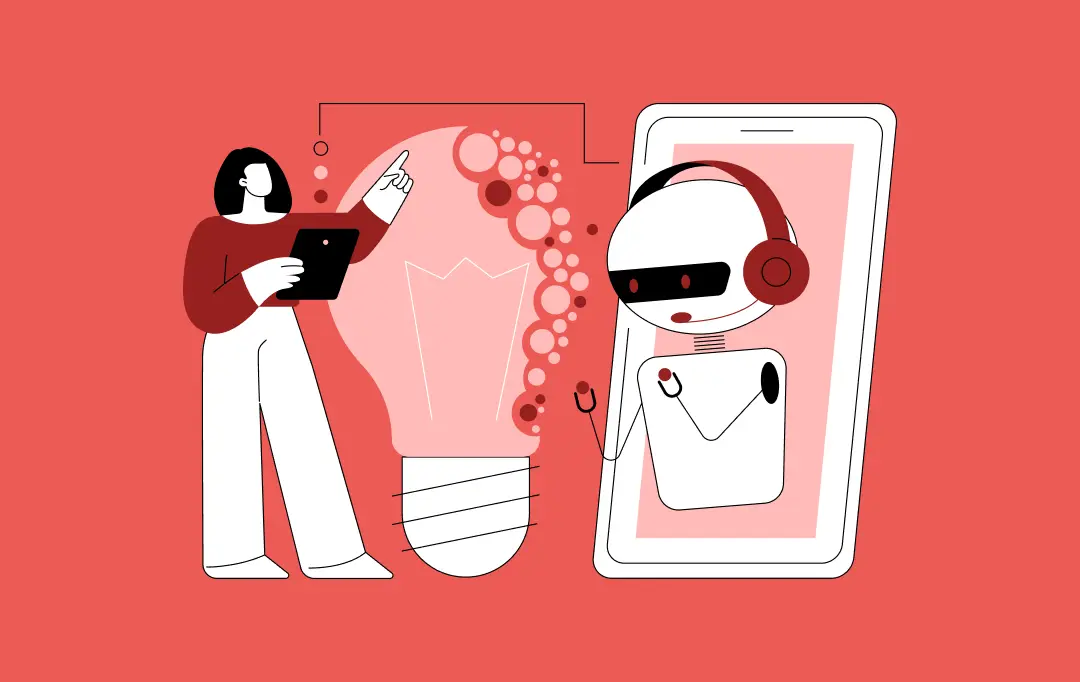
How Much Does It Cost to Build an AI App in Dubai?
Key takeaways: AI app costs in Dubai typically range from AED 80,000 for simple builds to AED 800,000+ for enterprise systems. Dubai is past AI experimentation, and not investing now means catching up later at higher cost. The real budget is driven by data, integrations, architecture, and compliance, not just app features. Hidden costs like…

How AI Tokenization is Enabling Secure and Transparent Asset Ownership in 2026
By 2026, AI tokenization has moved beyond early-stage experiments and pilot projects. Tokenizing real-world assets has become a serious commercial strategy for financial institutions, supply chain operators and technology-driven enterprises. A 2025 report by the World Economic Forum in collaboration with Accenture highlights tokenization as a key mechanism for value exchange in modern financial markets.…

13 Ways Generative AI is Transforming the Hospitality Industry
Key takeaways: The most mature applications of Generative AI for hospitality are in guest service, revenue management, marketing, and operations automation. Real value comes from integrating generative AI into hospitality operations and existing PMS, CRS, CRM, and POS systems, rather than using stand-alone tools. Successful programs treat Generative AI in hospitality as a product, incorporating…
